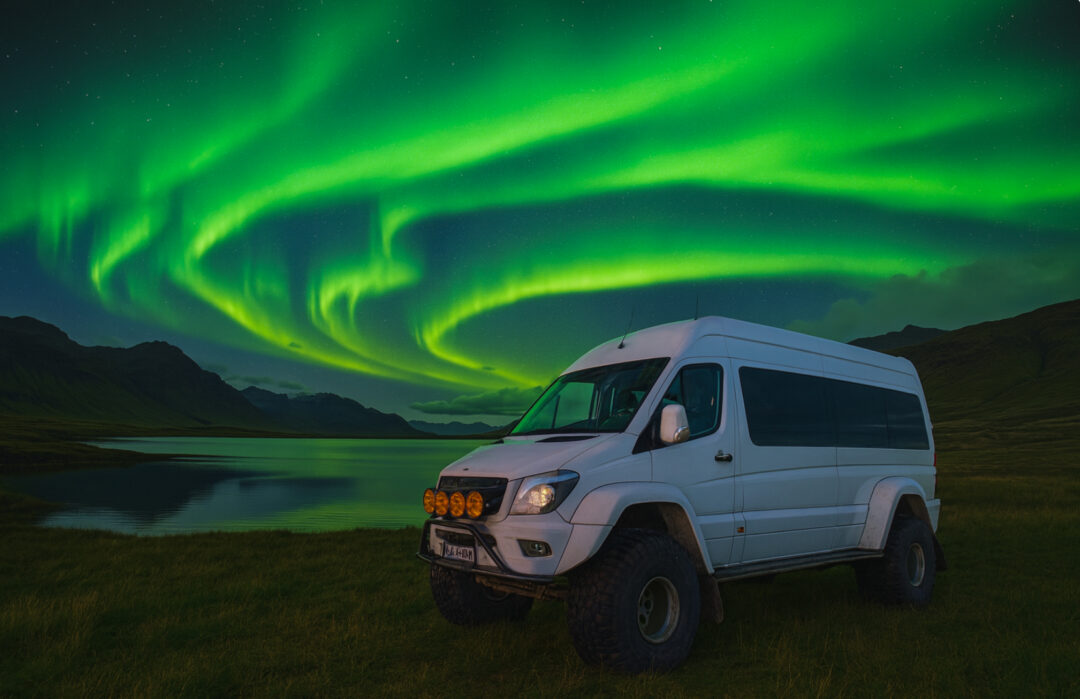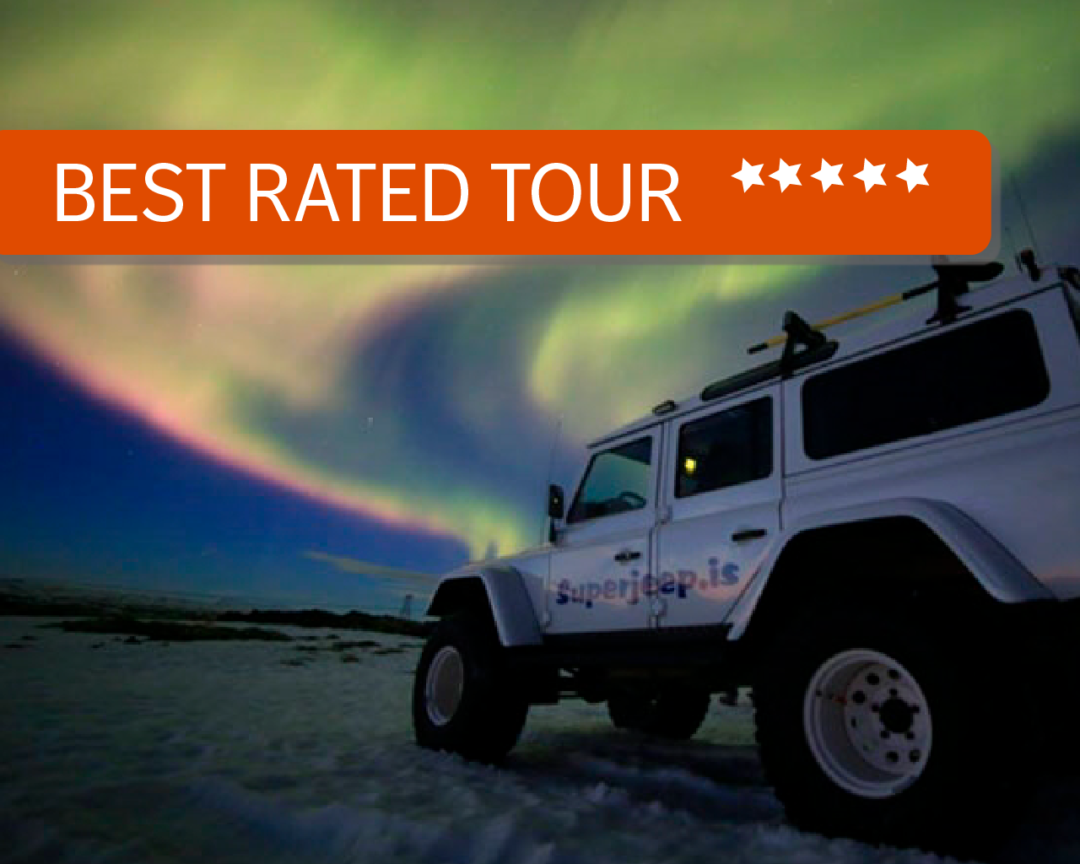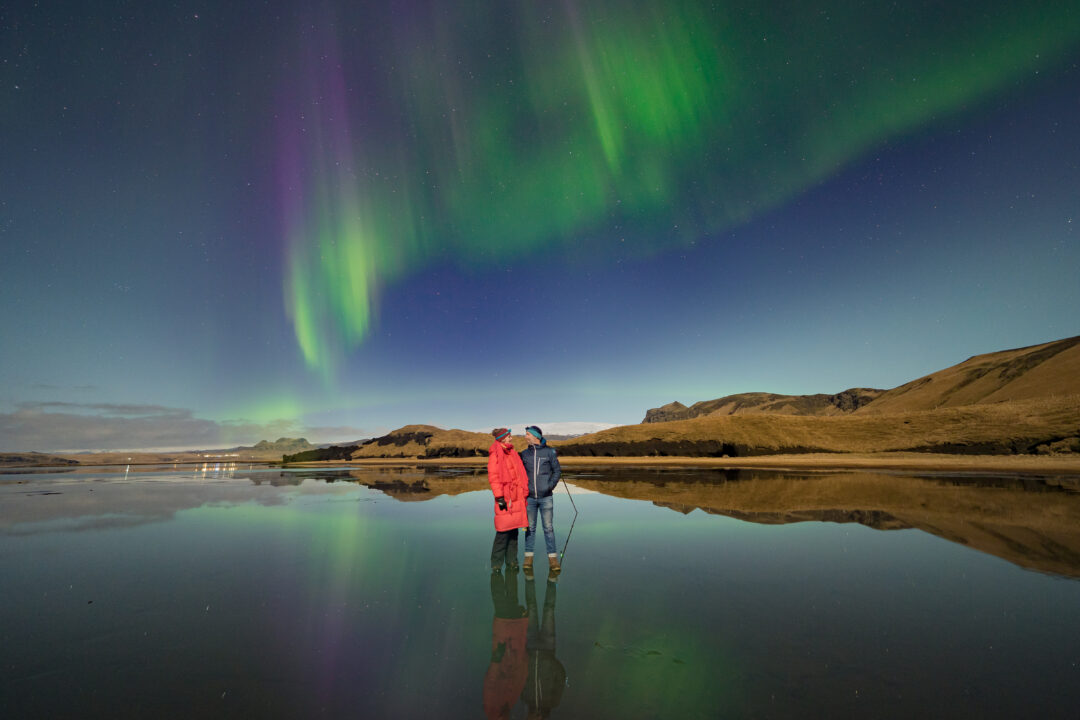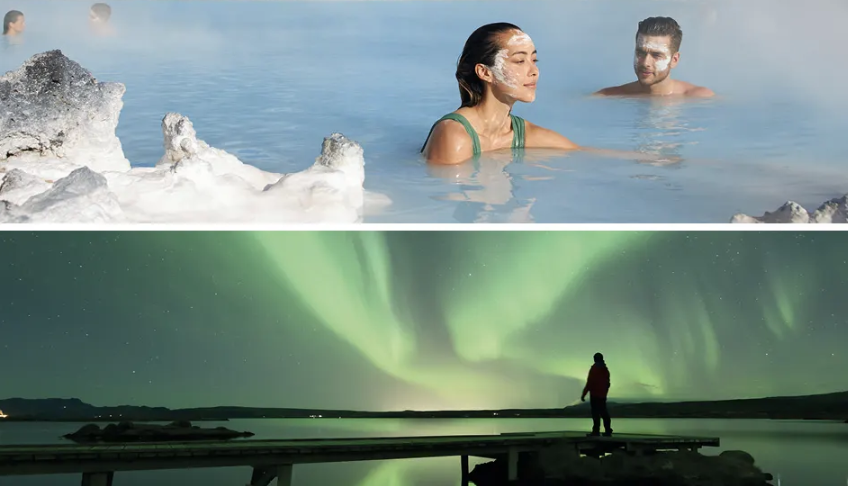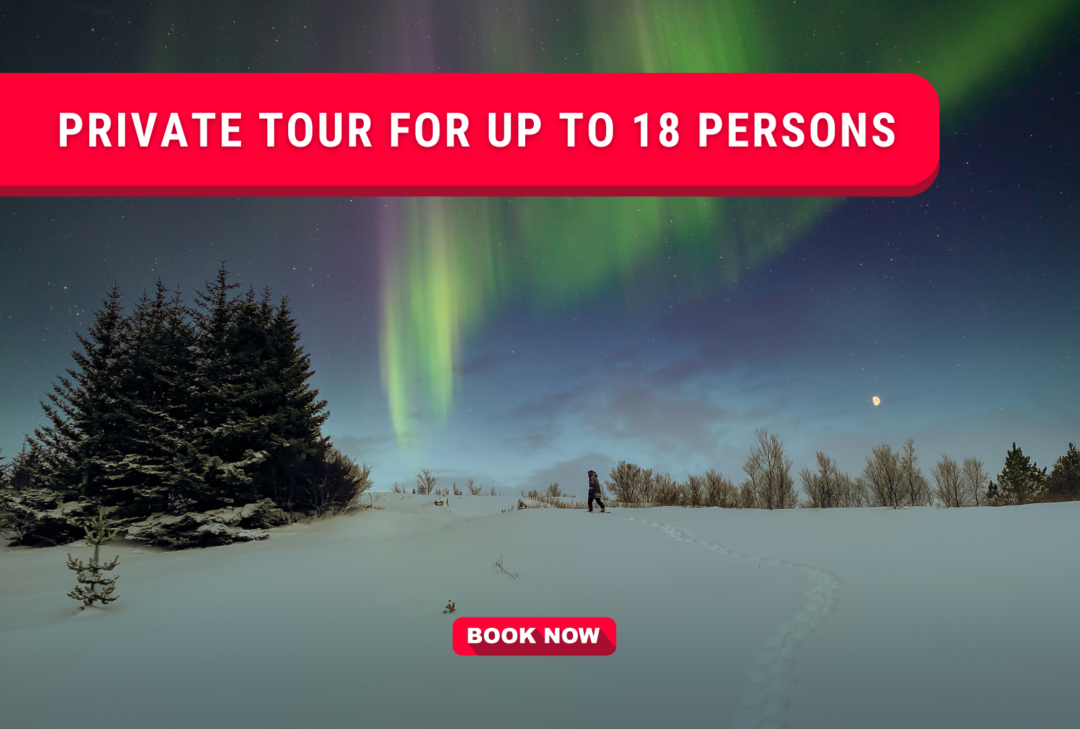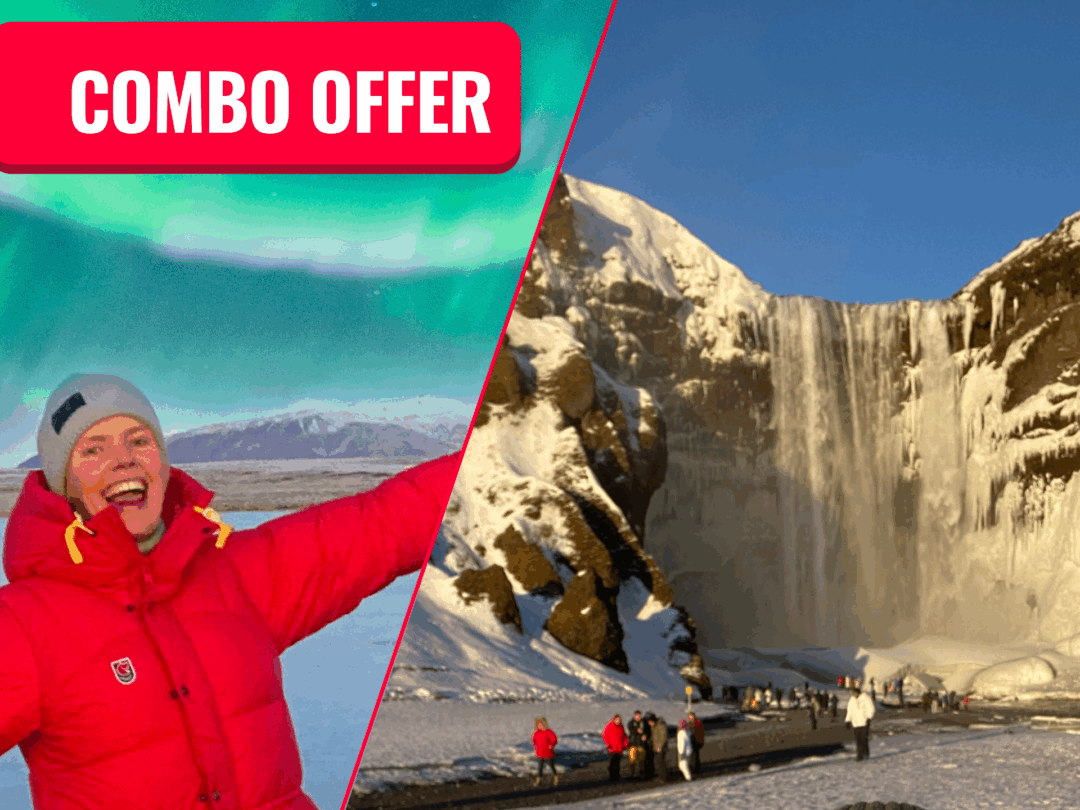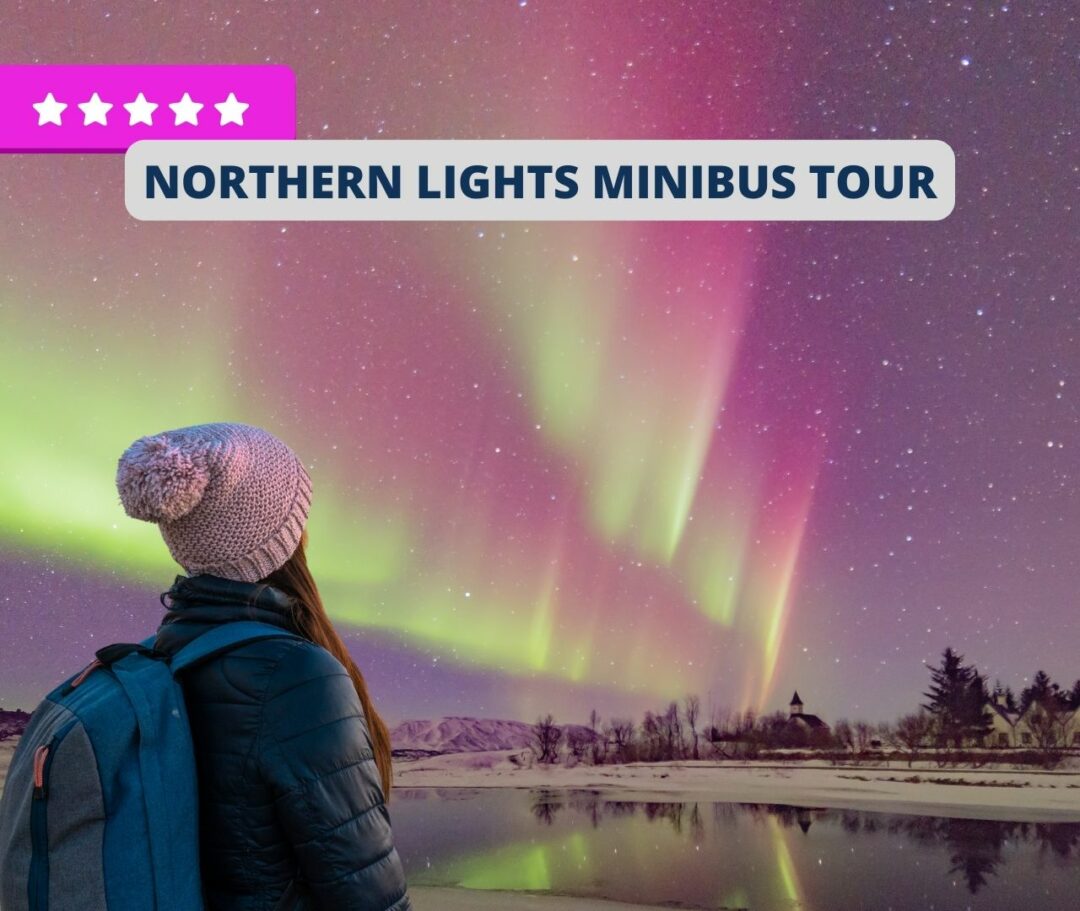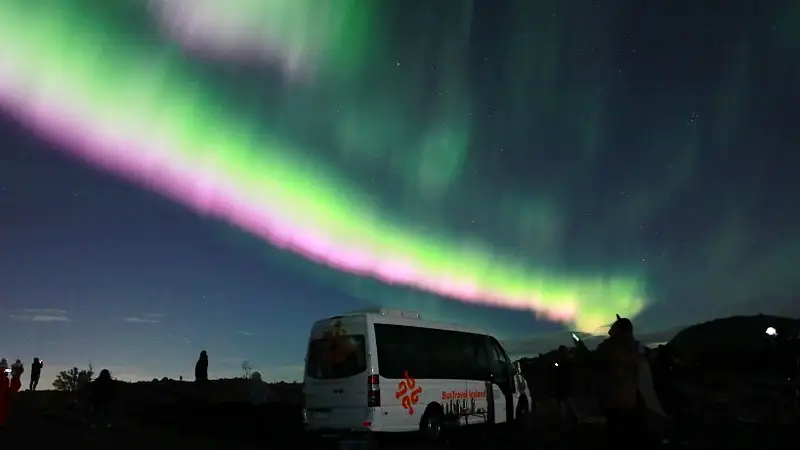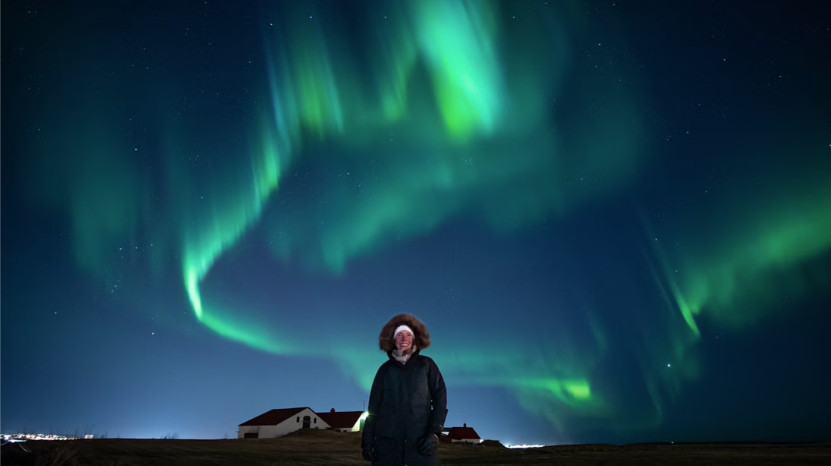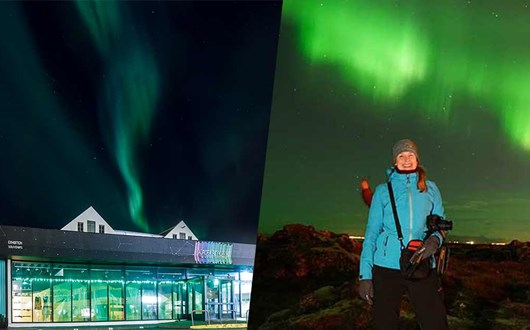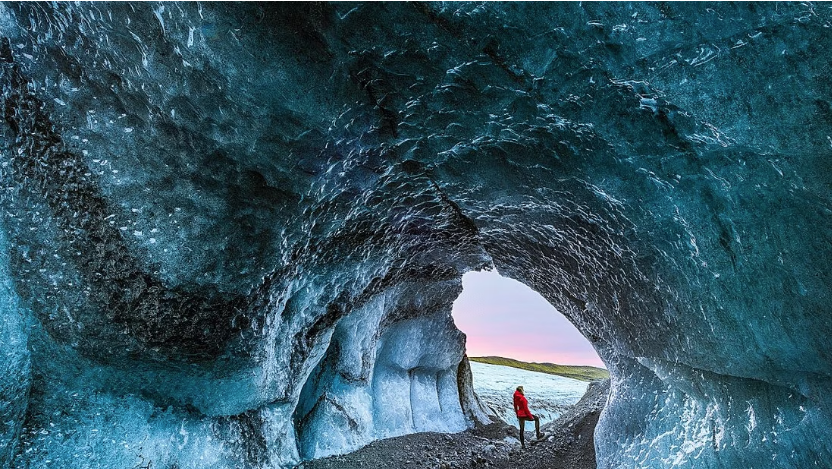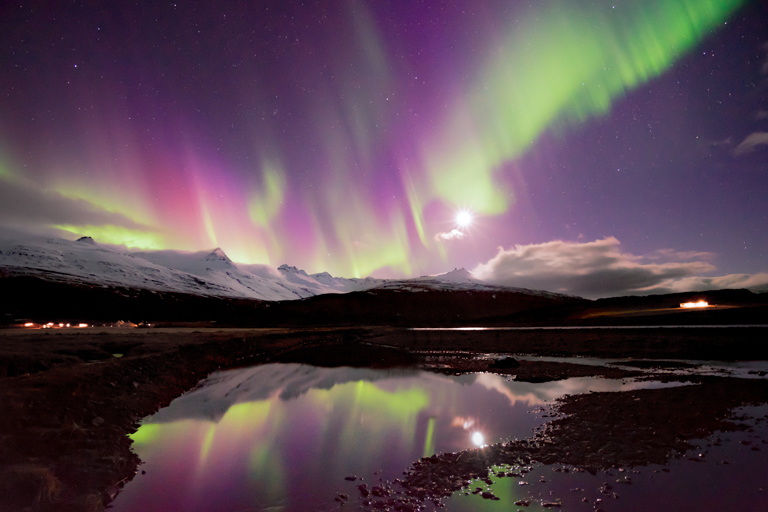IL MOMENTO MIGLIORE PER VEDERE L'AURORA BOREALE IN ISLANDA
Vedere l'ultraterrena aurora boreale affascina gli esseri umani da secoli ed è il sogno di una vita per molti viaggiatori.
Per ogni appassionato dell'aurora boreale, sorge spontanea una domanda:
Qual è il periodo migliore per vedere le Aurore Boreali?
UNISCITI A UNO DEI NOSTRI TOUR DELL'AURORA BOREALE
Cominciamo a sfatare il mito più comune sull’aurora boreale:
“L’aurora può essere vista solo in inverno, quando fuori fa molto freddo.”
Tutti i paesi situati sotto il cosiddetto ovale aurorale, ovvero la regione in cui è possibile osservare regolarmente l'aurora boreale, si trovano a latitudini artiche e subartiche e non godono quindi di temperature tropicali tutto l'anno.
Ma l'aurora si verifica molto al di sopra del nostro sistema meteorologico e non è influenzata dalle temperature terrestri.
La verità è che per vedere l'aurora boreale è necessario un cielo terso e che le notti terse sono solitamente più fredde di quelle nuvolose, ma non esiste un vero collegamento tra il freddo e le aurore boreali.
Alle latitudini polari, le aurore possono apparire in qualsiasi notte buia. Ecco perché le aurore non sono visibili durante i mesi estivi in Islanda, quando il sole di mezzanotte e la conseguente mancanza di oscurità le fanno svanire.
In conclusione, la stagione dell'aurora in Islanda inizia verso la fine di agosto e termina a metà aprile, e se si visita per qualche giorno durante questo periodo, si avranno buone possibilità di successo.
Tuttavia, ogni periodo della stagione dell'aurora ha le sue particolarità:
ESCURSIONE AURORA BOREALE IN SUPERJEEP
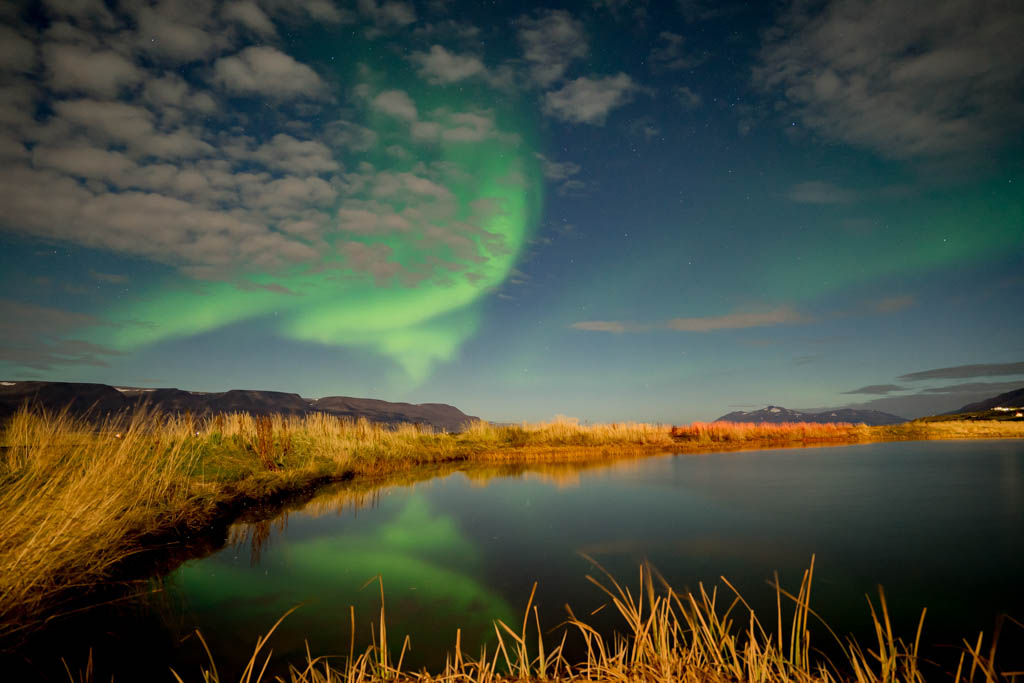
Aurora estiva
Spettacolare Aurora Autunnale – settembre / ottobre
Da fotografi, l'autunno è uno dei nostri periodi preferiti per andare a caccia dell'aurora boreale. Ecco perché:
- I colori dell'estate islandese
L'Islanda in autunno è semplicemente meravigliosa. Sotto le cime delle montagne che sembrano ricoperte di zucchero, il muschio artico, i cespugli di mirtilli e le betulle sono dipinti di oro e rosso, creando lo scenario perfetto per osservare le prime aurore boreali della stagione.
- Le temperature sono ancora ragionevoli
Sì, siamo in Islanda e osservare l'aurora boreale ha un prezzo: può fare molto freddo!
A settembre, tuttavia, le temperature solitamente non scendono ancora sotto gli 0°C, rendendolo il periodo perfetto per trascorrere una notte sotto il cielo artico.
- L'aurora ama gli equinozi
L'estate si trasforma ufficialmente in autunno durante l'equinozio d'autunno, il 23 settembre. Mentre l'aurora boreale è visibile da fine agosto, è l'equinozio a dare a questo spettacolo di luci cosmiche una spinta in più, spesso producendo alcune delle migliori attività di aurora boreale della stagione.
- I laghi e gli stagni non sono ancora ghiacciati
Questo aumenta il numero di potenziali location per splendide foto con riflessi.
- Le aurore al crepuscolo sono le più spettacolari
Il sole tramonta ancora tardi a settembre, dando la possibilità di osservare delle meravigliose aurore crepuscolari. Quando l'attività aurorale è elevata, le aurore spesso iniziano a danzare subito dopo il tramonto, quando il cielo è ancora illuminato da bellissimi colori blu scuro e arancione all'orizzonte.
Alcuni degli spettacoli di aurora più impressionanti vengono catturati a settembre e ottobre: qui c'è uno dei nostri video in tempo reale dell'autunno dell'anno scorso.
Sei pronto a vedere le luci di questo autunno? Dai un'occhiata ai nostri tour preferiti qui!
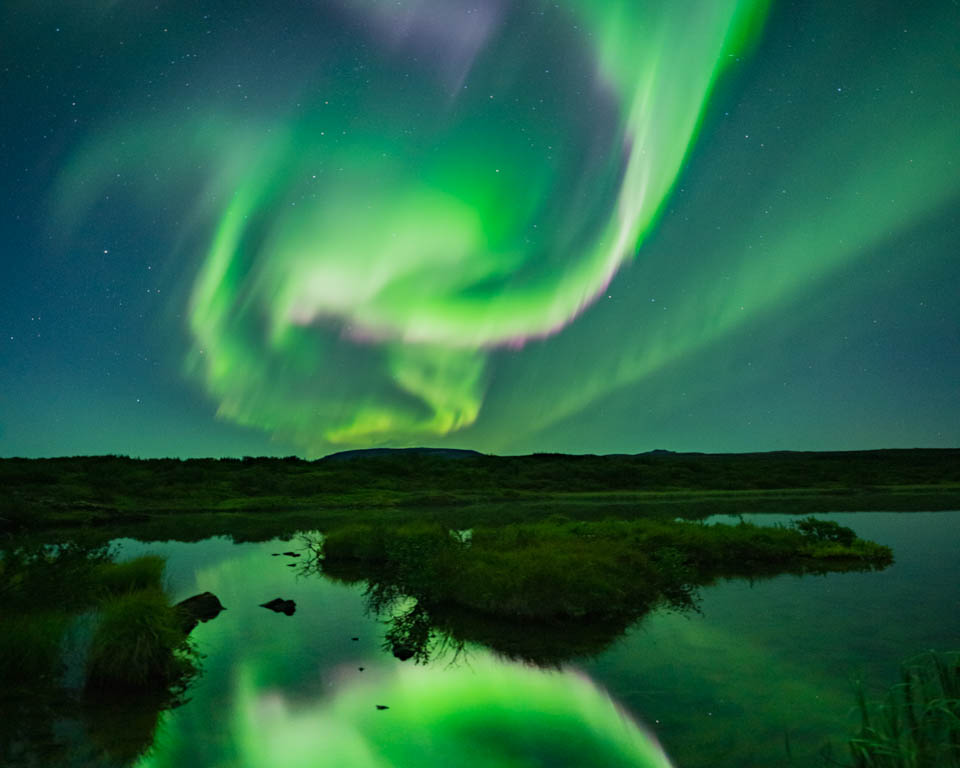
Esplosione di luci a settembre, Parco Nazionale di Þingvellir
ESCURSIONE AURORA BOREALE IN SUPERJEEP
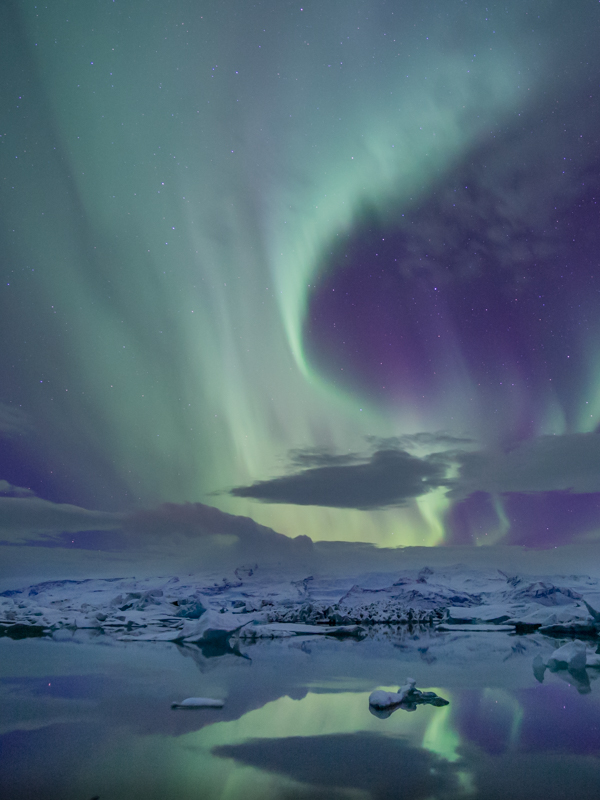
Aurora boreale invernale a Jökulsárlón
Spettacolare notte artica nel paese delle meraviglie invernale – dicembre e gennaio
Grazie alla sua posizione appena sotto il Circolo Polare Artico, l'Islanda non ha notti polari nella definizione standard. Anche se non c'è un blackout invernale totale, le ore di luce diurna a dicembre e gennaio sono molto limitate. In sostanza, si hanno tra quattro e cinque ore di luce solare al giorno durante il pieno inverno in Islanda. È quindi particolarmente importante tenere in considerazione il fattore luce quando si pianificano attività ed escursioni.
Per darti un'idea, ecco alcuni orari dell'alba e del tramonto a Reykjavik durante l'inverno:
1 dicembre: alba alle 10:45 e tramonto alle 15:45
15 dicembre: alba alle 11:15 e tramonto alle 15:30
1 gennaio: alba alle 11:19 e tramonto alle 15:42
15 gennaio: alba alle 10:56 e tramonto alle 16:18
Detto questo, ci sono ovviamente diverse buone ragioni per pianificare il tuo viaggio in Islanda per vedere l'aurora boreale in inverno:
1. L'inverno è arrivato!
Le temperature fredde iniziano a stabilizzarsi e la neve solitamente inizia ad accumularsi a dicembre. La caccia all'aurora nella natura innevata è un modo perfetto per godersi l'aurora boreale.
2. Lunghe notti artiche
Per vedere l'aurora boreale, il fattore più importante è l'oscurità. Ne abbiamo in abbondanza durante il lungo mese invernale nei paesi nordici!
3. Vacanze stagionali romantiche e divertenti
A dicembre, l'Islanda è la destinazione invernale per eccellenza per le vacanze di Natale o Capodanno!
4. Osservare le stelle!
Grazie alle lunghe ore di oscurità, l'inverno in Islanda è il momento perfetto per osservare il cielo notturno. Quasi nessun inquinamento luminoso e cieli limpidi e cristallini rendono l'Islanda una destinazione eccezionale per scoprire il nostro universo, e oltre.
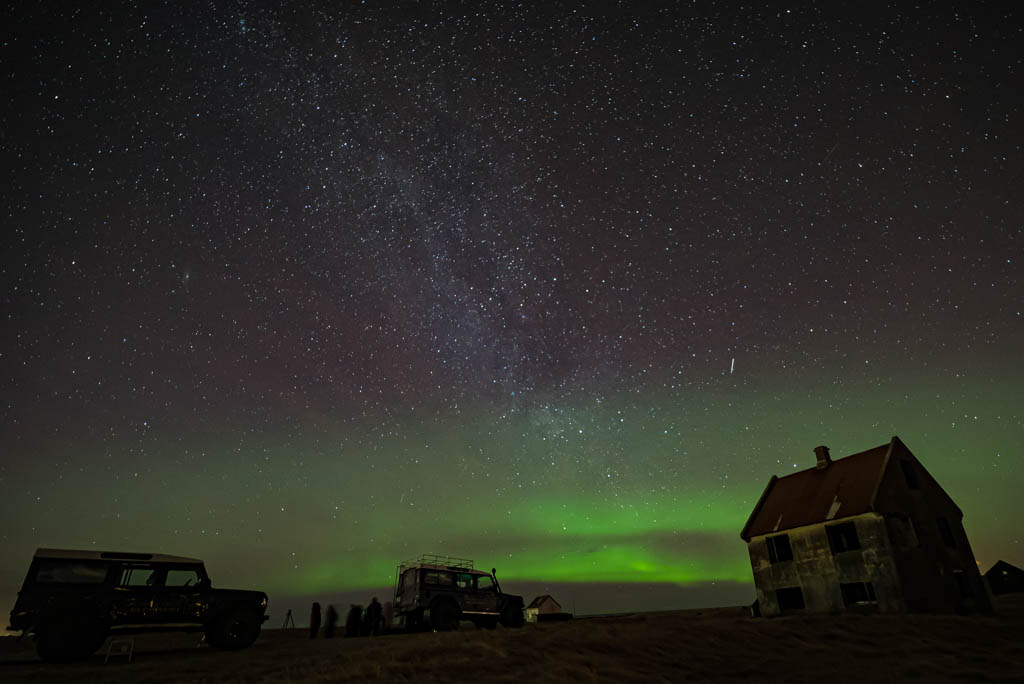
Dai un'occhiata a questo tour dell'aurora boreale su Land Rover modificati: questi ragazzi sono davvero i migliori quando si tratta di osservare le stelle in Islanda.

Aurora boreale a Kirkjufell a marzo
Spettacolare aurora primaverile – febbraio e marzo
La fine dell'inverno e l'inizio della primavera sono i periodi più gettonati per visitare l'Islanda per ammirare l'aurora boreale, e per delle buone ragioni:
- La primavera è la stagione dell'aurora boreale!
Secondo 75 anni di registrazioni storiche, le perturbazioni geomagnetiche sono quasi due volte più probabili in primavera e in autunno rispetto all'inverno e all'estate.
In primavera, spesso sperimentiamo forti esplosioni aurorali, chiamate sottotempeste aurorali. Le sottotempeste si verificano con poco preavviso e a volte con un'intensità incredibile, trasformando l'intero cielo in verde. Preparatevi per gli avvistamenti più spettacolari!
- Gli ultraterreni paesaggi innevati
L'Islanda è ricoperta di neve: il paese onora davvero il suo nome. La combinazione delle aurore boreali e della soffice neve profonda è davvero uno spettacolo da vedere. Laghi e stagni sono ghiacciati e le viste sono così particolari da renderla davvero un'esperienza unica nella vita.
- Più ore di luce
Le giornate si allungano rapidamente, aprendo un tesoro di attività invernali tra cui scegliere. Per molti dei nostri ospiti, combinare la caccia all'aurora boreale notturna con le attività invernali diurne come l'esplorazione di caverne di ghiaccio, la slitta trainata dai cani o le escursioni con le racchette da neve, è il modo perfetto per esplorare l'Islanda. Grazie all'aumento della luce diurna, c'è molto tempo extra per viaggiare nel paese durante il giorno.
Sei pronto a pianificare la tua visita a febbraio o marzo? Dai un'occhiata a questi tour.

Foto dal nostropacchetto invernale di 4 giorni per l'aurora boreale
In sintesi
1. In Islanda, la stagione dell'aurora boreale inizia verso la fine di agosto e termina a metà aprile. Se si visita l'Islanda in qualsiasi momento in questo lasso di tempo per qualche giorno, si hanno buone probabilità di successo.
2. Contrariamente a quanto si crede comunemente, il pieno inverno non è necessariamente il periodo migliore per l'aurora boreale, a causa della ridotta attività solare e delle condizioni meteorologiche instabili. Considera settembre o marzo per aumentare le tue possibilità!
3. Tieni presente che la magnifica aurora boreale è un fenomeno naturale che non sempre si presenta al momento giusto. Anche quando le probabilità sembrano essere a tuo favore, considera sempre la visione dell'aurora boreale come la ciliegina sulla torta del tuo viaggio.
4Scegli la stagione per la tua vacanza in base alle tue preferenze e necessità: stai pensando a una fuga invernale artica con luci danzanti sopra la tua vasca idromassaggio o preferiresti avere più ore di luce e temperature più calde per esplorare le varie attrazioni e attività del paese?
Hai deciso quando viaggiare nella regione del circolo polare artico? Dai un'occhiata alla nostra Guida definitiva all'osservazione dell'aurora boreale: ti prepareremo all'avventura!

